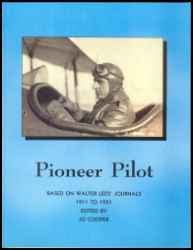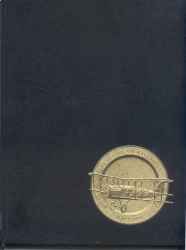
1892-1969 |
 |
|
from FLYING, May 1919 |
 |
 |
||
| Carl Batts, 1916. | Carl Batts, 1965. |
|
1916 The war speeded up the development of aircraft as no other factor could. Airplanes of greater speed and reliability were built and put into use. One day, we were to see the speedy French "Spad" the foreign fighter plane shipped to Newport News for exhibition purposes. Carl Batts, who had taught Paul Culver to fly the land machine, was chosen to fly it and he looped and rolled at a rate we had never seen before. Those swift planes could fly 120 miles an hour and maneuver with lightning speed. They were armed with a machine gun rigidly mounted on the plane and synchronized to fire through the propeller, therefore capable of shooting only in the direction the plane was flying. It took skill to fly and fire at the same time. It was strictly individual, hand to hand combat, or rather, wing to wing aerial combat and a battle of wits and skillful flying in those early days. 1936 Carl Batts lived at 433 Oak Avenue, Pasadena, California. This was about one mile from my home. As of 12-11-05, the house has disappeared and the property has become commercial. June, 1936 |
 |
|
|
|
from FLYING May, 1929 Lieut. Carl Batts enlisted in the aviation section of the army soon after he was graduated from Colgate college. He took his course of sprouts at the Glenn Curtiss school at Buffalo, and was in the air only 556 minutes as a student before qualifying for a solo trip and his pilot's license. One week after his first tryout alone he was made an instructor, and was sent by Curtiss to Newport News to teach in a civilian school. Here he was one of the first instructors in the dcuntry to teach army men to fly in preparation for the struggle in europe. Thirty of Batts' students went across soon after was was declared. After he entered the Government service, Lieut. Batts went to Princeton for an exhaustive course in aviation ground work, a requisite of every good instructor. He became commander of a squadron at the school, and passed the rigid and trying tests with highest honors. He was assigned to Camp Dick, Dallas, Texas, for further ground work, gunnery, military tactics and other phases of air warfare. From Dallas, Lieut. Batts went to Lake Charles, La., where he was instructing when notified a few days ago of his recommendation for a second lieutenancy in the aviation section of the signal corps. Lieut. Batts has become known as an "ace" among American military instructors, and he is recognized as one of the best fliers in the country. |
|
via email from Kenneth Hnottavange-Telleen, 10-10-11 " Neta Snook later noted that she was always nervous in the presence of Batts because of his stern demeanor, but she felt that Stinson was "effervescent and projected camaraderie." I can confirm that Mr. Batts still had a stern demeanor, in 1965 or so. I remember him as being very formal and reserved all the time. That could happen if you had trained 30 pilots for WWI, and probably seen not many of them come back. Regards, Ken HT |
|
|
|
"Behind this curious title lies the history of the American aviator Carl Truman Batts, (in Norway referred to as “Mr Batts”). He was in Scandinavia on behalf of the American Curtiss Company. In April 1919 he arrived in Bergen, Norway to fly one of the products of the Curtiss Company, the Curtiss MF Seagull. Here is the story of his stay in Norway." You can access the story by clicking on the title above. If time permits, I heartily suggest that you visit the homepage of the site, European Airlines.no, and take advantage of the many other features which are available, prominent among which is the story of Oliver A. Rosto: The First Norwegian to Fly? |
 |
by Jo Cooper |
 |
 |
A Story of Early Aviation Days by Edith Dodd Culver |
by Edith Dodd Culver |
|
Past President of the Early Birds Carl T. Batts, who was born in 1892, on February 26, 1969, spent his last moments writing a
letter in connection with Early Bird business. This letter finished, he turned to walk across the room and at that moment suffered a fatal
heart attack. He is survived by his wife, Wanda, who was always with him at reunions and other Early Bird affairs. He was interred in
the family plot at the Lodi, California Cemetery. A memorial service was held March 8, 1969 in the Pasadena Presbyterian Church with
the Reverend Dr. Ganse Little officiating. At the time he was elected President of The Early Birds, an account of his personal life and his accomplishments was published in CHIRP No. 72, December 1965 January 1970, No. 76 Birthdate courtesy of Joe Gertler |
|
If you have any more information on this Early Bird, please contact me. E-mail to Ralph Cooper Back 
 |